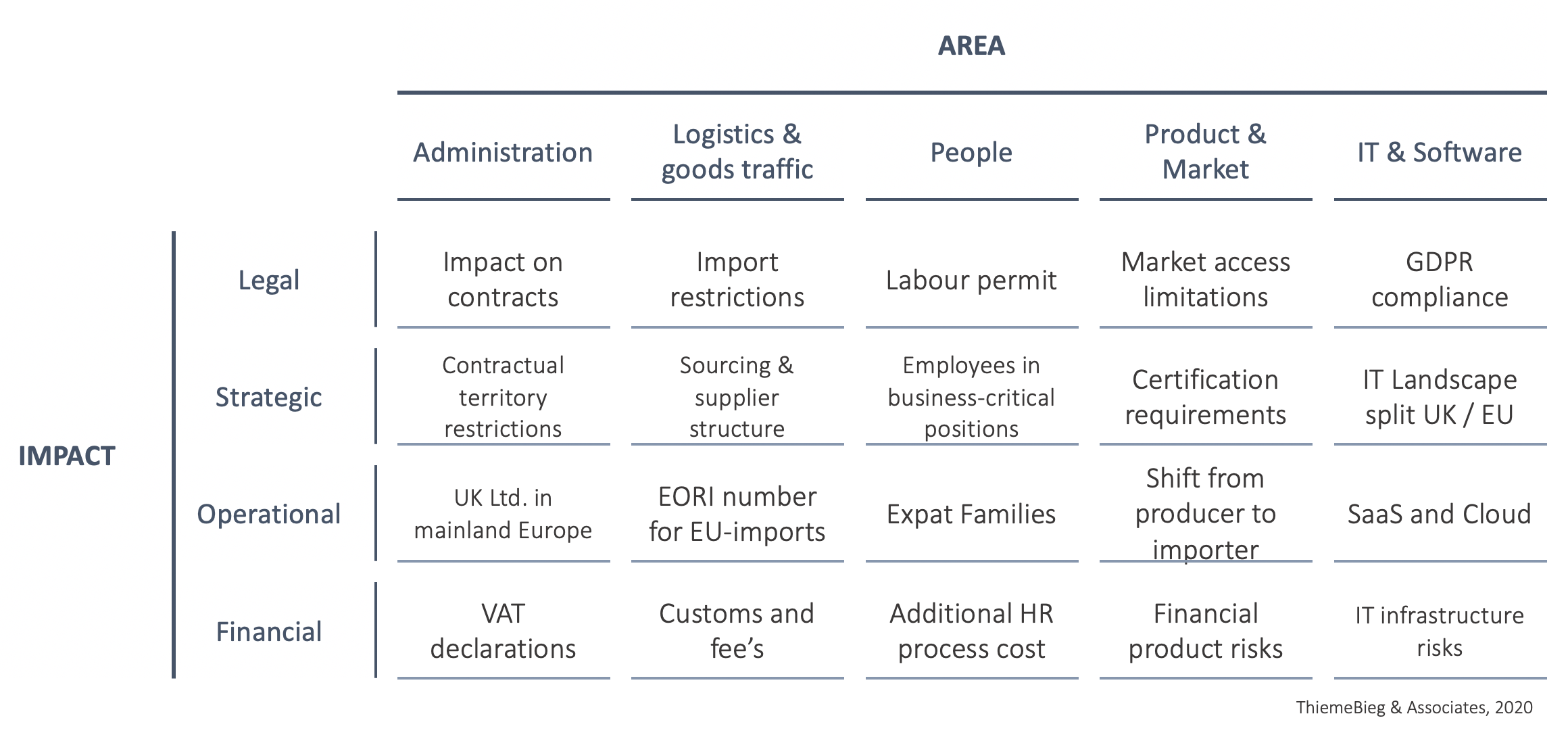"...And so now is the time for our businesses to get ready, and for hauliers to get ready, and for travellers to get ready."
The Brexit transition period will end by end of 2020. As of end November 2020, the Brexit negotiations stuck as PM Boris Johnson aims for a trade deal similar to the Switzerland deal with the European Union. During the last weeks, Covid-19 heavily influenced the Brexit negotiations as the European Chief negotiator was quarantined. The negotiations during the last weeks covered i.e. the discussion about fishing rights and fishing quotes in British waters. Especially for continental European companies, there are significant questions besides fishing rights: Data protection, trademarks, impact on existing contracts, impact on their employees and free movement of people. Meanwhile, Boris Johnson urges businesses to “get ready”, knowing the chance for a deal shrinks with every day.
A survey of the IHK Nord in Germany showed that 32% of the companies haven’t prepared for the Brexit yet. Only 25% of the surveyed companies evaluate the current situation as good, 43% of the companies value it as adequate, and 19% are heavily unsatisfied. The hard Brexit – or no deal Brexit, is expected to be „highly unfavorable“ for over 64% of the companies.
Based on our talks with several Banks and Manufacturing companies, their main concern is the no-deal Brexit, leaving several areas of trade and regulation uncertain. With no-deal, the trade flips back towards the WHO trade rules and the UK will be treated by the European Unions like any region without trade agreement – such as Eastern and Southern Africa or Thailand. This will become an unsatisfying but manageable situation – but it needs preparation and a certain amount of risk management within companies. In addition to the flip-back to WTO trade regulations, there are more complex topics without sufficient legal guidance so far, such as the treatment of British corporations (i.e. Ltd’s) registered under the German commercial code, or taxation issues in handling the VAT.

We’ve crated a Brexit framework covering the focus areas of:
For each area, we analyzed the impact on:
as well as financial impacts of the Brexit.
The Brexit framework aims to give companies a guideline and clear structure to determine their risks and risk mitigation activities for the Brexit – independent of the eventual Brexit scenario.The Brexit framework can be used for the likely no-deal scenario as well as possible trade agreement scenarios with different levels of trade agreements.
We created questions to analyze each of the five topics, and for each point of intersection within the framework we provide recommendations for possible measures. These measures can be used in addition or in extend to existing measures at a company. The framework is constantly expanded with new guiding questions and additional measures.
The Brexit framework is applicable to a variety of companies independent from their core business – from car manufacturing companies, engineering companies, retailers, to insurances or Banks, as the framework aims on the core functions of the companies rather than being product specific. If specific functions, such as physical trade of goods is applicable, the company can measure the impact i.e. in terms of changes in trade policies and new needs, such as the mandatory EORI number for EU imports. The structure of the framework allows companies to set clear responsibilities for each topic, and manage the risks by topics and impact areas.
The Brexit framework is fully implemented in our new TB&A Brexit CheckUp software, build on the TopEase platform from Business DNA. The Brexit framework builds the underlying logic to identify Brexit-affected areas within the company, and the impact of the Brexit on these areas. For each identified spot a risk mitigation strategy can be defined. Users can document current efforts in risk mitigation, use the recommendations of the framework, add additional informations i.e. evaluations of possible financial or operational damages.
Our TB&A Brexit framework combined with the Brexit CheckUp gives companies a powerful tool to manage the Brexit with a 360 degree perspective on their business. The integrated and smart consulting content from the Brexit framework, especially the recommendations, help companies to lower their consulting fees and act faster.
